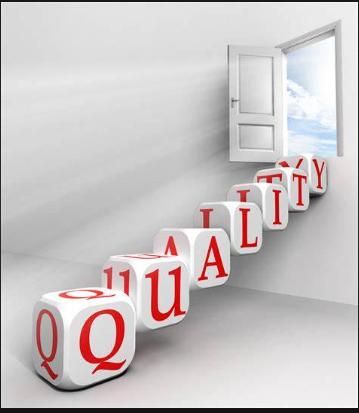What is Air Quality? Air Quality Indicator and Air Quality Index
What is Air Quality?
“Air quality” refers to the air around us. Good air quality refers to the degree to which the air is clean, transparent, and free from pollutants such as smoke, dust, and vapor, as well as other gaseous impurities in the air. By evaluation of the various air quality indicators, the Air quality is determined. Good air quality is essential for maintaining a beautiful balance in life on earth for people, plants, animals, and natural resources. When air pollution reaches a high concentration, the health of people, plants, animals and natural resources is thus endangered.

Poor air quality can be hazardous to human health and/or the environment. Air quality can be affected by natural or man-made sources. Natural resources include volcanic eruptions and dust storms. Man-made sources include pollution from moving vehicles, toxic gases from industry, coal-fired power plants, combustion of wood or other materials, and landfills. Both sources can affect overall air quality and cause serious human health problems.
Also Read:
- Water Logging
- Endangered Animals, Species of Threatened Animals in the World
- Recycling Near You Recycling Centre Processes of Recycling
How does air quality deteriorate?
Air quality is deteriorating due to daily emissions from various sources of environmental pollution. These include power plants, manufacturing plants, foundries, vehicles, and fixed sources such as burning wood and coal. Mobile resources such as trucks, buses, planes, and cars. Natural resources such as volcanic eruptions and sandstorms
Pollutants from these products can be released into the atmosphere and can be harmful to human health, animals, and the environment. Air quality depends on three factors: the amount of pollution, the amount released into the atmosphere, and the length of time it is stored.

Sources of air pollution fall into several categories, including sulfur dioxide (SO2), particulate matter, hydrocarbons (HC), volatile organic compounds (VOCs), lead, carbon dioxide (CO2), and sulfur monoxide. Removes pollutants. ). ), nitrogen oxides (NOx), and smoke. In many places, smoke, dust, CO, NOx, SO2, HC, and fumes from factories, power plants, vehicles, and metal foundries represent poor air quality, especially in urban and industrial areas.
Why Does Air Quality Change?
Since the air is constantly moving, air quality can vary from day to day and hour to hour. Regional air quality is a direct result of how the air moves in the area and how people affect the air.
Human affect air quality
Mountains Geographic features such as coastlines and artificial fields can cause the concentration or distribution of pollutants in an area. However, the amount and type of pollutants released into the air are the most damaging factors. Natural resources such as volcanic activity and dust storms add to the atmosphere, but most pollution comes from human activities. Automobiles, emissions from power plants, and toxic emissions from factories are examples of air pollution.
Winds Affect Air Quality
Air quality affects air quality because air can carry pollutants. For example, mountainous coastal areas can have more pollution during the day when the ocean winds blow pollutants out of the sea, and less pollution at night when the wind is blowing and the pollutants in the ocean are not quite right. and so on.
Temperature Affects Air Quality
Temperature can also affect air quality. In cities, the air quality deteriorates during the winter months. When the air temperature is cool, air pollutants can stay close to the surface under the cold, dry air. During the summer months, warm air rises and transports pollutants from the Earth’s surface to the upper troposphere. But more sunlight creates more harmful ground-level ozone
Air Pollution
Air pollution has a negative effect on the land and sea, but also on the air. Good air quality is essential for a healthy life on earth for humans, animals, and plants. The Clean Air Act of 1970 improved air quality in the US, helped reduce air pollution and save thousands of lives every year, but as the world’s population grows, 80% of the world’s energy budget comes from burning fossil fuels, and the air quality is of the utmost importance to us. Present and future quality of life -Priority exists.
Establishment of Policies and Clean Air Action Plans
Some guidelines support, and initiatives to improve air quality are needed to reduce emissions not only nationally but also globally. Local, state, and international environmental agencies must work together to ensure air quality standards are met.
Environmental action to combat air pollution is a responsibility that can only be fulfilled with an effective plan, strategy, and policy.
For example, the European Clean Air Program (CAFE) and the Environmental Protection Agency (EPA) set standards to limit air pollution and a new Clean Air Quality Directive has since been developed. The systems developed over the past decade have been successful in setting air quality emissions targets and standards.
Targets have been set to regulate and reduce the various levels of air pollutants to certain levels, and to address identified problems. In difficult situations, deadlines must be set and respected. Thus, the development of similar action plans by CAFE, EPA, or other special environmental agencies can make a significant difference in improving air quality.
Any state or country that does not have an air regulation policy to improve air quality can develop an air cleaning action plan. It is important to prepare an action plan as its implementation aims to reduce the level of air pollution and improve air quality in the region.
States and governments can impose conditions on the control of pollutants in various programs to protect the environment and air quality. A related program is space surveillance, which has been approved by many countries and governments. This program allows air quality statistics to be collected by measuring samples to assess compliance with established air quality standards.
This can take into account pollution trends in all regions to prevent or reduce the problem of existing air pollution. Other air quality control programs may include air pollution monitoring and enhanced ozone monitoring.
Efforts to reduce air pollution may also include strategies for land use, urban planning, and transportation planning. By applying these strategies, it is possible to identify the basics of air pollution and take steps to address the problems encountered.
Therefore, environmental policies and air quality programs can be developed to address air quality that directly affects human health and the environment. Therefore, the world, especially regions with air pollution problems, can improve air quality by adopting or developing clean air action plans and support programs.
Conclusion
Energy efficiency and long-term sustainability are needed to combat air pollution, climate change, and depletion of the ozone layer. For true solutions owners, society, individuals, companies, institutions, and government agencies must work together as a team to achieve positive results in a healthy and sustainable environment.
In most cases, the causes, consequences, and consequences of air pollution are related. This means solving the air quality problem in order to drastically reduce other air pollutants. For example, reducing the consumption of fossil fuels not only helps to reduce disasters but also to prevent disasters. CO2, CO, and NOx from car emissions
In the long run, efforts to improve air quality will benefit everyone by improving quality of life and health, lowering health care costs, and increasing local productivity.